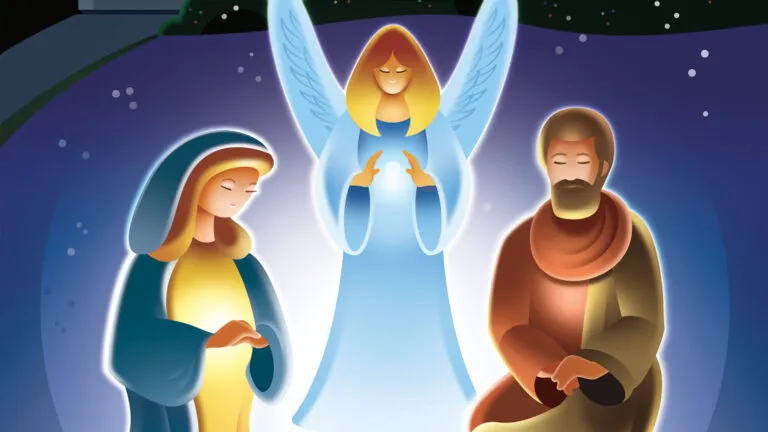Today’s guest blogger is Kaylin Kaupish, an editor at Angels on Earth.
On July 12, 2022, NASA revealed the first images sent back from the James Webb Space Telescope. The advanced space science observatory was launched into deep space on Christmas Day in 2021. The NASA website states that “Webb will solve mysteries in our solar system, look beyond to distant worlds around other stars, and probe the mysterious structures and origins of our universe and our place in it.” The first images that came back included stunning cosmic landscapes, glowing nebulas and galaxy clusters. And one of these wondrous images might be familiar to Christmas movie fans!

Frank Capra’s 1946 classic It’s a Wonderful Life has an iconic opening, with citizens of Bedford Falls praying for their good friend, George Bailey (James Stewart). The prayers make their way up into the sky where we see stars and galaxies. The galaxies are two high-level angels who discuss what needs to be done for George Bailey and decide to send down his guardian angel, Clarence, to help him.
The image of the galaxies that Capra chose to use is no illustration. It is an actual image of Stephan’s Quintet (named after the French astronomer who discovered them, Édouard Stephan), a cluster of five galaxies in the Pegasus constellation. Though the picture is simple and low resolution, it has become an iconic image for angels. Now, movie fans and space buffs don’t have to wonder what these angelic galaxies actually look like.
Thanks to the new image from the James Webb Space Telescope, we can see Stephan’s Quintet in a whole new way! “Webb shows never-before-seen details in this galaxy group,” says NASA. “Sparkling clusters of millions of young stars and starburst regions of fresh star birth grace the image.” A stunning, swirling display of light and color, these galaxies truly do look angelic. If you look closely, you might be able to see Clarence with his wings.
You can see more images from the James Webb Space Telescope— including the Carina Nebula and the Southern Ring Nebula— on the NASA website here.





